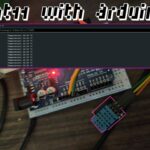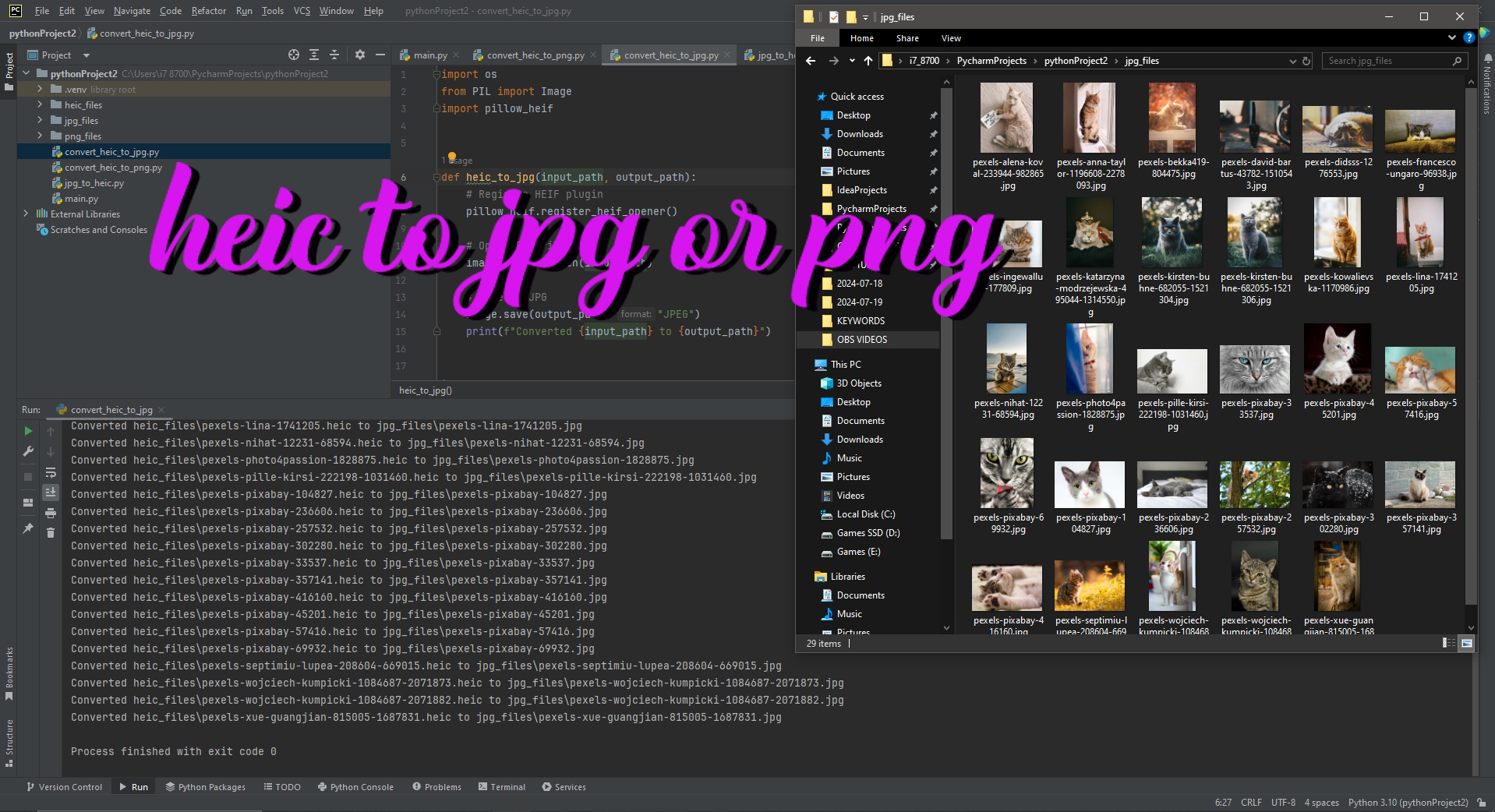Opencv Algorithms which one is right for you
Selecting the Right Method:
- Application Context: Consider the nature of your images and the specific requirements of your application. For instance, if you’re searching for a highly similar template in an image regardless of illumination changes, normalized methods might be more appropriate.
- Computational Trade-offs: As mentioned earlier, more sophisticated methods come with increased computational costs. If real-time processing is crucial, simpler methods might be preferable.
Square Difference Matching Method (TM_SQDIFF)
These methods compute the squared difference between the template and the corresponding pixels in the image being analyzed. A perfect match results in a value of 0, indicating identical regions. Larger values denote poorer matches.
Normalized Square Difference Matching Method (TM_SQDIFF_NORMED)
Similar to TM_SQDIFF, this method computes the normalized squared difference between the template and the image. A perfect match yields a score of 0. It’s beneficial when comparing images with varying lighting conditions or contrasts.
Correlation Matching Methods (TM_CCORR)
These methods perform a multiplication operation between the template and the image patches. A perfect match results in a higher value, while poor matches yield smaller or zero values.
Normalized Cross-Correlation Matching Method (TM_CCORR_NORMED)
Like TM_CCORR, this method computes the normalized cross-correlation between the template and the image. A significant mismatch results in a score closer to 0. It’s useful for handling changes in brightness and contrast.
Correlation Coefficient Matching Methods (TM_CCOEFF)
TM_CCOEFF matches the template and image relative to their means. A perfect match scores 1, a perfect mismatch scores -1, and a value of 0 implies no correlation (random alignments).
Normalized Correlation Coefficient Matching Method (TM_CCOEFF_NORMED)
Similar to TM_CCOEFF, this method matches the template and image relative to their means, providing a score ranging from positive to negative. A higher positive score indicates a better match, while a negative score indicates a mismatch.
As you progress from simpler methods like square difference towards more sophisticated ones like correlation coefficients, you gain more accurate matches at the expense of increased computational complexity. Choosing the appropriate method depends on your application’s requirements for accuracy versus computational efficiency.
It’s crucial to interpret the results correctly: methods like square difference show the best matches at minimum points, while correlation and correlation coefficient methods exhibit optimal matches at maximum points. Understanding these nuances helps in accurately identifying and interpreting matched regions within images.
Handling Scale and Rotation Variations:
- Scale: Template matching assumes the template and the object in the image are of the same scale. For scale-invariant matching, consider preprocessing techniques like image pyramid or scale-space methods.
- Rotation: For rotational variations, consider augmenting your template set with rotated versions or employing techniques like feature-based methods (e.g., SIFT, SURF, or ORB) that handle rotation better.
Handling Scale Variations:
SIFT (Scale-Invariant Feature Transform):
- Scale Invariance: SIFT detects and describes keypoints (distinctive image features) at multiple scales using a scale-space representation.
- Scale-Space Pyramid: It creates a scale-space pyramid by applying Gaussian blurring and downsampling, allowing detection of features at different levels of granularity.
- Key Component: SIFT computes descriptors using gradient information in local regions around keypoints, making these descriptors robust to changes in scale.
import cv2
# Read the input images
img1 = cv2.imread('image1.jpg', 0)
img2 = cv2.imread('image2.jpg', 0)
# Initialize the SIFT detector
sift = cv2.SIFT_create()
# Detect keypoints and compute descriptors
keypoints1, descriptors1 = sift.detectAndCompute(img1, None)
keypoints2, descriptors2 = sift.detectAndCompute(img2, None)
# Match descriptors using a matcher (e.g., BFMatcher)
bf = cv2.BFMatcher()
matches = bf.knnMatch(descriptors1, descriptors2, k=2)
# Apply ratio test for good matches
good_matches = []
for m, n in matches:
if m.distance < 0.75 * n.distance:
good_matches.append([m])
# Draw good matches
img_matches = cv2.drawMatchesKnn(img1, keypoints1, img2, keypoints2, good_matches, None, flags=2)
# Display the output
cv2.imshow('SIFT Matches', img_matches)
cv2.waitKey(0)
cv2.destroyAllWindows()SURF (Speeded-Up Robust Features):
- Efficient Scale-Invariant Features: SURF also addresses scale variations efficiently by utilizing integral images and box filters instead of Gaussian filters like SIFT.
- Haar Wavelet Response: SURF uses Haar wavelets for feature description, enabling quicker computation and scale-invariant feature matching.
- Response to Scale Changes: Its approach allows for quick responses to changes in scale while maintaining robustness.
import cv2
# Read the input images
img1 = cv2.imread('image1.jpg', 0)
img2 = cv2.imread('image2.jpg', 0)
# Initialize the SURF detector
surf = cv2.xfeatures2d.SURF_create()
# Detect keypoints and compute descriptors
keypoints1, descriptors1 = surf.detectAndCompute(img1, None)
keypoints2, descriptors2 = surf.detectAndCompute(img2, None)
# Match descriptors using a matcher (e.g., BFMatcher)
bf = cv2.BFMatcher()
matches = bf.knnMatch(descriptors1, descriptors2, k=2)
# Apply ratio test for good matches
good_matches = []
for m, n in matches:
if m.distance < 0.75 * n.distance:
good_matches.append([m])
# Draw good matches
img_matches = cv2.drawMatchesKnn(img1, keypoints1, img2, keypoints2, good_matches, None, flags=2)
# Display the output
cv2.imshow('SURF Matches', img_matches)
cv2.waitKey(0)
cv2.destroyAllWindows()ORB (Oriented FAST and Rotated BRIEF):
- Combination of Features: ORB combines the speed of BRIEF (Binary Robust Independent Elementary Features) descriptors with the rotational robustness of FAST (Features from Accelerated Segment Test) keypoint detection.
- Rotation Invariance: It incorporates orientation estimation for keypoints, making it more resilient to image rotations.
- Efficiency: ORB is computationally faster than SIFT or SURF while maintaining robustness to scale and rotation changes.
import cv2
# Read the input images
img1 = cv2.imread('image1.jpg', 0)
img2 = cv2.imread('image2.jpg', 0)
# Initialize the ORB detector
orb = cv2.ORB_create()
# Detect keypoints and compute descriptors
keypoints1, descriptors1 = orb.detectAndCompute(img1, None)
keypoints2, descriptors2 = orb.detectAndCompute(img2, None)
# Match descriptors using a matcher (e.g., BFMatcher)
bf = cv2.BFMatcher(cv2.NORM_HAMMING, crossCheck=True)
matches = bf.match(descriptors1, descriptors2)
# Sort matches based on distance
matches = sorted(matches, key=lambda x: x.distance)
# Draw matches
img_matches = cv2.drawMatches(img1, keypoints1, img2, keypoints2, matches[:10], None, flags=2)
# Display the output
cv2.imshow('ORB Matches', img_matches)
cv2.waitKey(0)
cv2.destroyAllWindows()Handling Rotation Variations:
SIFT:
- Rotation Robustness: SIFT inherently captures orientation information for keypoints, making it relatively robust to image rotations.
- Orientation Assignment: It computes orientation histograms around keypoints, allowing for reliable matching despite rotation changes.
SURF:
- Orientation Assignment: Similar to SIFT, SURF assigns orientations to keypoints, enhancing its ability to handle rotational changes.
- Fast Orientation Computation: SURF employs Haar wavelet responses to quickly estimate orientations, contributing to its efficiency in handling rotations.
ORB:
- Rotation Robustness: ORB, with its incorporation of orientation information from FAST keypoints, maintains robustness to image rotations.
- Efficiency in Rotation Handling: It efficiently manages rotational variations due to the incorporation of orientation estimation during feature extraction.
In summary, SIFT, SURF, and ORB excel in handling scale and rotation variations by employing different techniques for detecting keypoints, describing their features, and assigning orientations. They allow for more robust feature matching across images with differing scales and rotations, making them valuable in various computer vision applications where scale and rotation invariance are crucial.
Template Size and Relevance:
- Template Size: Smaller templates might lead to faster computations but could miss relevant matches or be susceptible to noise. Larger templates might be computationally intensive.
- Relevance: Ensure your template captures the essential features you’re trying to match. It should represent a distinctive portion of the image.
Post-Processing and Thresholding:
- Thresholding: Set appropriate thresholds on the matching scores to filter out weaker matches or false positives.
- Non-Maximum Suppression: When dealing with multiple detections, apply techniques like non-maximum suppression to refine and select the most relevant matches.
Experimentation and Validation:
- Test Trials: Before final implementation, conduct trials with different methods and parameters to observe their behavior on your specific data.
- Validation: Validate the matched results against ground truth data to ensure accuracy and reliability.
Robustness to Noise and Occlusions:
- Noise Handling: Noisy images can adversely affect matching accuracy. Preprocess images with denoising techniques if noise is prevalent.
- Occlusions: Methods like template matching might struggle with occluded objects. Consider employing methods that are more robust to occlusions or partial matches.
Real-time Considerations and Hardware:
- Hardware Constraints: Consider the computational capabilities of the hardware where your application will run. Optimize methods based on available resources.
- Parallelization: Explore parallel computing or hardware acceleration techniques for faster processing, especially in real-time scenarios.
Each method and technique in template matching has its strengths and weaknesses. Choosing and combining these methods intelligently while considering specific application constraints can significantly enhance the accuracy and efficiency of your template matching tasks.















Appreciate you sharing, great article post.Really looking forward to read more. Much obliged.
Fantastic article. Want more.
Say, you got a nice blog article.
Looking forward to reading more. Great post.Really looking forward to read more. Fantastic.
Im thankful for the blog article. Cool.
Thank you ever so for you article post.Much thanks again. Awesome.
Im thankful for the blog.Really thank you! Will read on…
Im obliged for the post.Really thank you! Great.
Thanks again for the post.Really thank you! Keep writing.
Im thankful for the blog article.Really thank you! Really Great.
Great blog article. Really Great.
I truly appreciate this blog article.Thanks Again. Fantastic.
If some one needs expert view about blogging then i propose him/herto go to see this blog, Keep up the fastidious job.
This is a really good tip especially to those new to the blogosphere.Simple but very accurate information… Thank you for sharingthis one. A must read post!
Great blog. Will read on…
When I initially commented I clicked the -Inform me when new remarks are included- checkbox as well as currently each time a remark is added I get four emails with the same comment. Exists any way you can remove me from that service? Thanks!
I read this piece of writing completely on the topic of the comparison of most recent and earlier technologies, it’s awesome article.
tadalafil max dose tadalafil pillstadalafil gel
I observe there is a lot of spam on this blog. Do you want help cleaning them up? I might help in between courses!
More and more people ought to read this and understand this side of the
Would you be fascinated about exchanging hyperlinks?
Unquestionably imagine that that you said. Your favourite reason appeared to be on the net the easiest thing to take into accout of. I say to you, I certainly get irked whilst other people think about concerns that they just do not understand about. You managed to hit the nail upon the top as well as outlined out the whole thing without having side-effects , folks could take a signal. Will probably be back to get more. Thanks
My brother recommended I might like this blog. He was entirely right. This post truly made my day. You cann’t imagine just how much time I had spent for this information! Thanks!
You can certainly see your expertise within the paintings you write. The world hopes for more passionate writers like you who are not afraid to mention how they believe. Always go after your heart.
Howdy! This is my 1st comment here so I just wanted to give a quick shout out and say I genuinely enjoy reading your posts. Can you recommend any other blogs/websites/forums that go over the same subjects? Thank you!
Wonderful blog! I found it while browsing on Yahoo News. Do you have any tips on how to get listed in Yahoo News? I’ve been trying for a while but I never seem to get there! Appreciate it
Hey very cool web site!! Man .. Excellent .. Amazing .. I will bookmark your site and take the feeds also…I’m happy to find a lot of useful information here in the post, we need develop more techniques in this regard, thanks for sharing. . . . . .
I will right away grab your rss feed as I can’t find your email subscription link or e-newsletter service. Do you have any? Kindly let me know in order that I could subscribe. Thanks.
Helpful info. Lucky me I discovered your site by chance, and I am surprised why this coincidence did not happened earlier! I bookmarked it.
That is the proper weblog for anybody who desires to seek out out about this topic. You notice so much its virtually onerous to argue with you (not that I truly would want…HaHa). You definitely put a brand new spin on a subject thats been written about for years. Great stuff, simply great!
Thank you a lot for giving everyone such a breathtaking possiblity to read in detail from this web site. It’s always very nice plus packed with a good time for me personally and my office fellow workers to search the blog at the least 3 times a week to read through the fresh stuff you have got. And definitely, I am also always fulfilled with the astounding hints you serve. Selected 1 points in this article are in fact the simplest we have all ever had.
Hi there! I just wanted to ask if you ever have any problems with hackers? My last blog (wordpress) was hacked and I ended up losing many months of hard work due to no data backup. Do you have any solutions to stop hackers?
A big thank you for your blog post.Much thanks again. Great.
Im obliged for the blog post.Thanks Again.
Great, thanks for sharing this article.Really thank you! Want more.
wow, awesome blog.Thanks Again. Will read on…
Appreciate you sharing, great post.Really looking forward to read more. Want more.
A big thank you for your blog post.Thanks Again. Really Cool.
Really informative blog post.Really looking forward to read more. Will read on…
A big thank you for your blog post.Much thanks again. Keep writing.
Im thankful for the article.Thanks Again. Really Great.
Looking forward to reading more. Great article. Great.
Thank you for your post.Much thanks again. Much obliged.
Pretty section of content. I just stumbled upon your blog and in accession capital to assert that I get in fact enjoyed account your blog posts. Anyway I will be subscribing to your feeds and even I achievement you access consistently rapidly.
I loved your article post.Thanks Again. Cool.
It’s actually a great and useful piece of info. I’m satisfied thatyou just shared this useful info with us. Please keep us informed likethis. Thank you for sharing.my blog post … Houston
Im thankful for the blog post.Thanks Again. Great.
Very good blog post. Much obliged.
Thanks again for the article. Want more.
Stream The 14th February & Beyond, The Savages, On Canvas, Mr.Human & extra anytime. yahoo movies
Thanks a lot for the blog article.Thanks Again. Keep writing.
Major thanks for the article.Thanks Again. Really Great.
I am so grateful for your blog.Really thank you! Will read on…
Awesome post.Really thank you! Much obliged.
slots for real money online gambling play slots online
best custom essay writing services custom essay writing service reviews writing essay services
Hi, I do believe this is an excellent blog. I stumbledupon it 😉 I will return yet again since i have saved as a favorite it. Money and freedom is the greatest way to change, may you be rich and continue to guide others.
Thanks a lot for the blog.Thanks Again.
I guessed some, I think this app is really true ??Loading…
chloroquinne coronavirus treatment chloroquinr
Thank you for your blog. Keep writing.
Hello! I could have sworn I’ve been to your blog before but after browsing through some of the posts I realized it’s newto me. Regardless, I’m certainly delighted I discovered it and I’llbe bookmarking it and checking back regularly!
Hi, just wanted to say, I liked this post. It was funny.Keep on posting!
Aw, this was an incredibly nice post. Finding the time and actual effort to make a top notch articleÖ but what can I sayÖ I procrastinate a lot and don’t seem to get anything done.
Great post. I was checking constantly this blog and I’minspired! Extremely helpful info particularly the last section 🙂 I handle such info a lot. I was looking for thisparticular info for a very lengthy time. Thank you and good luck.
Normally I do not read post on blogs, but I would like to say thatthis write-up very pressured me to check out and do so!Yoour writing taste haas been amszed me. Thank you, verygreat post.My blog; Hiking
Im grateful for the blog article.Really thank you! Great.
Major thanks for the blog post.Thanks Again.
I cannot thank you enough for the article post.Thanks Again. Much obliged.
I really liked your post.Really thank you! Much obliged.
Great blog post.Really thank you! Keep writing.
where can i get ivermectin for guinea pig ivermectin coronavirus
Aw, this was an extremely nice post. Taking the time and actual effort to produce a great article… but what can I say… I put things off a lot and never manage to get anything done.
Fantastic post.Thanks Again.
I think this is a real great article.Much thanks again. Cool.
Thanks again for the article post.Much thanks again. Really Cool.
always i used to read smaller articles that as well clear their motive, and that is alsohappening with this article which I am reading now.
Dead written articles, Really enjoyed studying.
Great post. I was checking continuously this blog and I’m impressed! Very helpful information specially the last part 🙂 I care for such info much. I was seeking this particular information for a long time. Thank you and good luck.
Wow, great blog post. Really Great.
houston apartment association 30m$ stolen from ICO investors apartments rapid city sd
Really informative blog.Much thanks again. Great.
Great article post.Much thanks again. Really Great.
Thank you ever so for you article post.Much thanks again. Want more.
That is a great tip especially to those fresh to the blogosphere. Simple but very precise information?Many thanks for sharing this one. A must read article!
I really liked your blog.Really looking forward to read more. Awesome.
wow, awesome blog.Really thank you! Really Cool.
Thanks a lot for the blog post.Really looking forward to read more. Want more.
Superb post however I was wondering if you could write a litte more on this topic? I’d be very grateful if you could elaborate a little bit further. Cheers!
I am always invstigating online for ideas that can assist me. Thanks!
provigil pill provigil for sale – modafinil provigil
พนันบอลอย่างไรให้ได้เงิน พนันบอลชนะยังไงผิดคดโกง UFABET จ่ายจริงจ่ายไม่ยั้งระบบเข้าใจง่าย แค่เพียงคลิกสมัครก็ทำเงินได้อย่างไม่ยากเย็นกับคาสิโนออนไลน์ สบายสุดๆชีวิตชิวๆชีวิตคลูๆทำเงิน สร้างกำไรสบายๆจึงควรที่ UFABET
Well I truly liked studying it. This information provided by you is very effective for accurate planning.
I??m a blog crazed person and i also like to read cool blog like yours.??-,*??slot gacor
I’m now not positive the place you are getting your info, but great topic.I needs to spend some time learning much more or working out more.Thanks for great information I was on the lookout for this information for my mission.
ivermectin for sale: stromectol for sale – generic ivermectin for humans
I like what you guys are up too. Such clever work and coverage!Keep up the amazing works guys I’ve you guys to my own blogroll.
I have fun with, result in I discovered just what I was having a lookfor. You’ve ended my four day lengthy hunt! God Bless you man. Have a nice day.Bye
Great, thanks for sharing this blog article.Really thank you! Awesome.
Really appreciate you sharing this blog post.Really looking forward to read more. Will read on…
how to help ed canadian pharmacy – indian pharmacy paypal
Профессиональный сервисный центр по ремонту бытовой техники с выездом на дом.
Мы предлагаем:ремонт бытовой техники в мск
Наши мастера оперативно устранят неисправности вашего устройства в сервисе или с выездом на дом!
Normally I don’t read article on blogs, however I wish to say that this write-up very compelled me to take a look at and do it! Your writing style has been surprised me. Thanks, very great article.
Thanks for another great article. Where else could anybody get that type of information in such a perfect way of writing? I have a presentation next week, and I’m on the look for such info.
“It will be an honour to lead the team at both St. Andrew’s and on the road in the league, along with the cup competitions in which Blues have a tradition of success.
Hey There. I found your blog using msn. This is a really well written article. I’ll make sure to bookmark it and come back to read more of your useful info. Thanks for the post. I will certainly return.
It¡¦s actually a nice and useful piece of information. I¡¦m happy that you shared this useful info with us. Please stay us up to date like this. Thanks for sharing.
best pills for ed erectile dysfunction pills ed pills otc
I blog quite often and I seriously appreciate your information. This article has really peaked my interest. I am going to book mark your blog and keep checking for new details about once per week. I subscribed to your Feed too.
Oh my goodness! Amazing article dude! Thanks, However I am encountering troubles with your RSS. I donít know why I am unable to join it. Is there anybody getting identical RSS problems? Anyone who knows the answer can you kindly respond? Thanx!!
What’s up, always i used to check blog posts here early in the daylight,since i enjoy to find out more and more.
doxycycline hyc doxycycline for sale – doxycycline pills